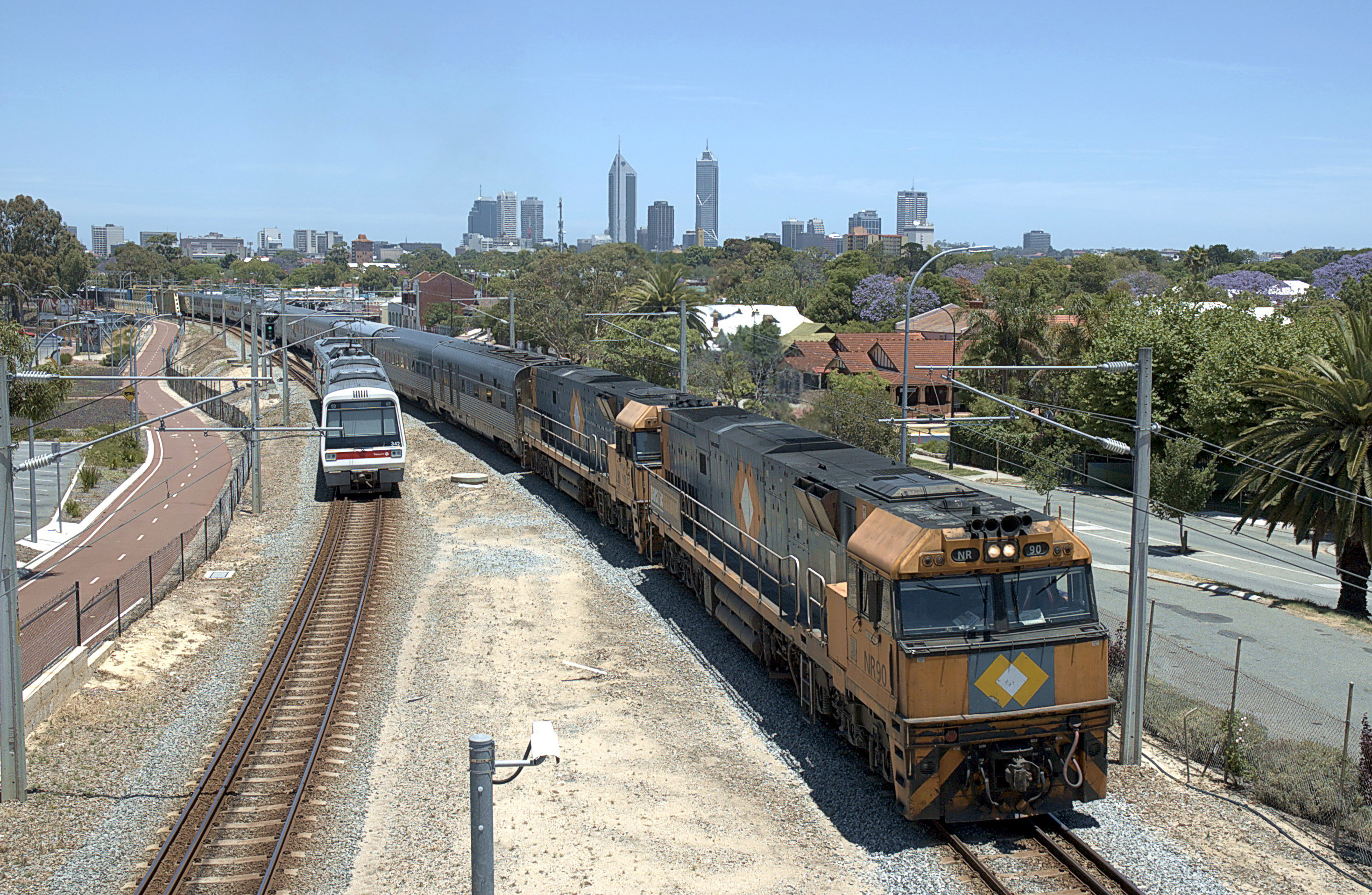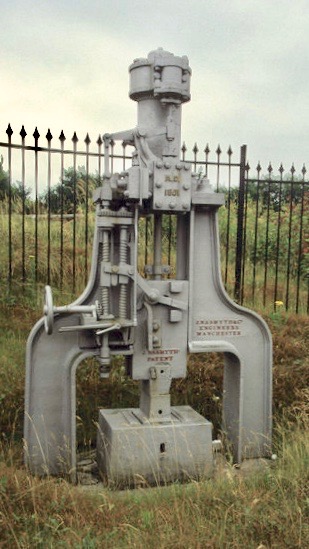|
WAGR N Class
The WAGR N class was a class of steam locomotives operated by the Western Australian Government Railways (WAGR) from 1896 until 1960. History In September 1896, five Neilson & Co built N class entered service hauling suburban trains around Perth between Fremantle and Midland Junction and on the Kalgoorlie-Boulder loop. Robert Stephenson & Co built a further twelve in 1898/99 and Nasmyth, Wilson & Co a further fifteen in 1901. In 1907/08 a further ten were added, when the Midland Railway Workshops converted ten O class. With the cessation of suburban services in Kalgoorlie, all were transferred to Perth. Most remained in service until replaced by Dm and Dd class locomotives in the 1940s and ADH class diesel multiple units in the 1950s. The last two were withdrawn in September 1960. N201 has been preserved at the Western Australian Rail Transport Museum. [...More Info...] [...Related Items...] OR: [Wikipedia] [Google] [Baidu] |
Western Australian Rail Transport Museum
The Railway Museum, also known as the Rail Transport Museum, is situated in Bassendean, Western Australia. It is run by the Western Australian division of the Australian Railway Historical Society (ARHS), which is called Rail Heritage WA. In the early days of operation it had in places been known as the ''Western Australian Rail Transport Museum'', and more recently, ''Rail Transport Museum''. On the internet and social media, it has been referred in variants with qualifiers of the location name such as the ''Bassendean Rail Museum'' and ''Rail Heritage Museum Bassendean''. The standard name is currently utilised as the ''Railway Museum''. Collection It has the most comprehensive collection of heritage steam locomotives and rolling stock in Western Australia. It was originally developed in 1969, and officially opened in November 1974 by the Western Australian Minister for Transport Ray O'Connor. ::Diesel Locomotives ::Steam Locomotives - include representatives of most cla ... [...More Info...] [...Related Items...] OR: [Wikipedia] [Google] [Baidu] |
WAGR Dd Class
The WAGR Dd class was a class of 4-6-4T tank locomotive operated by the Western Australian Government Railways (WAGR) between 1946 and 1972. History The Dd type was an evolution of the Dm class. However unlike the Dm class which used components of the old E Class tender engines, the Dd class components were all new. All were built at the Midland Railway Workshops entering service between April and November 1946. They were built to haul suburban passenger services in Perth, although they did on occasions work to Bunbury on the South Western and Merredin on the Eastern lines. The first were withdrawn in 1969, with the remainder in 1970/71 following the entry into service of the ADK/ADB class diesel multiple units. Preservation Two have been preserved: *Dd592 was preserved by the Australian Railway Historical Society in July 1972. In May 1984, Westrail commenced work at Midland Railway Workshops to restore it to operational condition as a Bicentennial project. It returned to s ... [...More Info...] [...Related Items...] OR: [Wikipedia] [Google] [Baidu] |
3 Ft 6 In Gauge Locomotives Of Australia
3 (three) is a number, numeral and digit. It is the natural number following 2 and preceding 4, and is the smallest odd prime number and the only prime preceding a square number. It has religious or cultural significance in many societies. Evolution of the Arabic digit The use of three lines to denote the number 3 occurred in many writing systems, including some (like Roman and Chinese numerals) that are still in use. That was also the original representation of 3 in the Brahmic (Indian) numerical notation, its earliest forms aligned vertically. However, during the Gupta Empire the sign was modified by the addition of a curve on each line. The Nāgarī script rotated the lines clockwise, so they appeared horizontally, and ended each line with a short downward stroke on the right. In cursive script, the three strokes were eventually connected to form a glyph resembling a with an additional stroke at the bottom: ३. The Indian digits spread to the Caliphate in the 9th ... [...More Info...] [...Related Items...] OR: [Wikipedia] [Google] [Baidu] |
Steam Locomotives Of Western Australia
Steam is a substance containing water in the gas phase, and sometimes also an aerosol of liquid water droplets, or air. This may occur due to evaporation or due to boiling, where heat is applied until water reaches the enthalpy of vaporization. Steam that is saturated or superheated is invisible; however, "steam" often refers to wet steam, the visible mist or aerosol of water droplets formed as water vapor condenses. Water increases in volume by 1,700 times at standard temperature and pressure; this change in volume can be converted into mechanical work by steam engines such as reciprocating piston type engines and steam turbines, which are a sub-group of steam engines. Piston type steam engines played a central role in the Industrial Revolution and modern steam turbines are used to generate more than 80% of the world's electricity. If liquid water comes in contact with a very hot surface or depressurizes quickly below its vapor pressure, it can create a steam explosion. Types ... [...More Info...] [...Related Items...] OR: [Wikipedia] [Google] [Baidu] |
Robert Stephenson And Company Locomotives
The name Robert is an ancient Germanic given name, from Proto-Germanic "fame" and "bright" (''Hrōþiberhtaz''). Compare Old Dutch ''Robrecht'' and Old High German ''Hrodebert'' (a compound of '' Hruod'' ( non, Hróðr) "fame, glory, honour, praise, renown" and ''berht'' "bright, light, shining"). It is the second most frequently used given name of ancient Germanic origin. It is also in use as a surname. Another commonly used form of the name is Rupert. After becoming widely used in Continental Europe it entered England in its Old French form ''Robert'', where an Old English cognate form (''Hrēodbēorht'', ''Hrodberht'', ''Hrēodbēorð'', ''Hrœdbœrð'', ''Hrœdberð'', ''Hrōðberχtŕ'') had existed before the Norman Conquest. The feminine version is Roberta. The Italian, Portuguese, and Spanish form is Roberto. Robert is also a common name in many Germanic languages, including English, German, Dutch, Norwegian, Swedish, Scots, Danish, and Icelandic. It can be use ... [...More Info...] [...Related Items...] OR: [Wikipedia] [Google] [Baidu] |
Railway Locomotives Introduced In 1896
Rail transport (also known as train transport) is a means of transport that transfers passengers and goods on wheeled vehicles running on rails, which are incorporated in Track (rail transport), tracks. In contrast to road transport, where the vehicles run on a prepared flat surface, rail vehicles (rolling stock) are directionally guided by the tracks on which they run. Tracks usually consist of steel rails, installed on Railroad tie, sleepers (ties) set in track ballast, ballast, on which the rolling stock, usually fitted with metal wheels, moves. Other variations are also possible, such as "slab track", in which the rails are fastened to a concrete foundation resting on a prepared subsurface. Rolling stock in a rail transport system generally encounters lower friction, frictional resistance than rubber-tyred road vehicles, so passenger and freight cars (carriages and wagons) can be coupled into longer trains. The rail transport operations, operation is carried out by a ... [...More Info...] [...Related Items...] OR: [Wikipedia] [Google] [Baidu] |
Neilson Locomotives , a village and parish in East Renfre ...
Neilson may refer to: Places * Zec Batiscan-Neilson, in the Portneuf Regional County Municipality, Quebec, Canada * Neilson Township, in Portneuf Regional County Municipality, Quebec, Canada * Neilson River (Bras du Nord), Saint-Raymond, Portneuf Regional County Municipality, Quebec, Canada Business * Neilson Dairy, or William Neilson Dairy Limited, a Canadian dairy company * Neilson and Company, 19th century locomotive manufacturer in Glasgow, Scotland Other uses * Neilson (name), people with the given name or surname * Roger Neilson Memorial Award, annual award for the top academic College/University player in the Ontario Hockey League See also * Nielsen (other) * Neilston Neilston ( sco, Neilstoun, gd, Baile Nèill, ) is a village and parish in East Renfrewshire in the west central Lowlands of Scotland. It is in the Levern Valley, southwest of Barrhead, south of Paisley, and south-southwest of Renfrew, at t ... [...More Info...] [...Related Items...] OR: [Wikipedia] [Google] [Baidu] |
List Of Western Australian Locomotive Classes
This is a list of Western Australian locomotive classes, being classes of locomotive that have worked on railways in Western Australia. The majority of Western Australian steam locomotive classes were operated by the Western Australian Government Railways (WAGR). Regularly scheduled steam working ceased on WAGR mainline operations after 1971 - with only special excursion or enthusiasts trains being hauled by steam after that time. Other significant operators include the Commonwealth Railways, the Midland Railway Company of Western Australia and State Saw Mills. Many private organisations also operated steam locomotives in Western Australia. Locomotives Western Australian Government Railway Midland Railway Company of Western Australia (In order of introduction on the Midland railway.) Commonwealth Railways Other Diesel locomotives BHP (In order of introduction on the Goldsworthy and Mount Newman railways.) * CM39-8 * CM40-8M * CM40-8 * GE AC6000CW * EMD S ... [...More Info...] [...Related Items...] OR: [Wikipedia] [Google] [Baidu] |
Rail Transport In Western Australia
Railways in Western Australia were developed in the 19th century both by the Government of Western Australia and a number of private companies. Today passenger rail services are controlled by the Public Transport Authority (a department of the Government of Western Australia) through Transperth, which operates public transport in Perth, and Transwa, which operates country passenger services. Great Southern Rail operates the ''Indian Pacific''. The interstate standard gauge line east from Kalgoorlie is owned by the Australian Rail Track Corporation, with most other lines leased by the state to Arc Infrastructure. Freight rail was privatised in 2000. General intrastate freight is mainly operated by Aurizon, while grain traffic is also operated by Aurizon under contract to the CBH Group. Interstate traffic is operated by Pacific National and SCT Logistics. Aurizon also operate an interstate mineral sands service to Kwinana from Broken Hill for Tronox. A number of private iron or ... [...More Info...] [...Related Items...] OR: [Wikipedia] [Google] [Baidu] |
Westrail N Class
The N class was a class of diesel locomotives built by Comeng, Bassendean for Westrail between 1977 and 1979. History Eleven were built all for use on the Western Australian narrow gauge network, primarily to haul mineral trains in the south east. Between July 1982 and June 1983, the first four members of the class had their vacuum brake equipment replaced with Westinghouse air brake systems, and were redesignated as the NA class. While liked by crews for their ride quality and power, they suffered from reliability problems and most were withdrawn in the early 1990s. The last were withdrawn in 1997.Westrail N / NA / NB classes Westrail Alcos 9 March 2002 In January 1995 two of the NA class were [...More Info...] [...Related Items...] OR: [Wikipedia] [Google] [Baidu] |
Nasmyth Wilson And Company
Nasmyth, Gaskell and Company, originally called The Bridgewater Foundry, specialised in the production of heavy machine tools and locomotives. It was located in Patricroft, in Salford England, close to the Liverpool and Manchester Railway, the Bridgewater Canal and the Manchester Ship Canal. The company was founded in 1836 and dissolved in 1940. Nasmyth The company was founded in 1836 by James Nasmyth and Holbrook Gaskell. Nasmyth had previously been employed in Henry Maudslay's workshop in Lambeth and his interest was mainly, but not limited to, specialist machine tools. Modern materials handling The Bridgewater Foundry is an example of modern materials handling that was part of the evolution of the assembly line. The buildings were arranged in a line with a railway for carrying the work going through the buildings. Cranes were used for lifting the heavy work, which sometimes weighed in the tens of tons. The work passed sequentially through to the erection of the framework ... [...More Info...] [...Related Items...] OR: [Wikipedia] [Google] [Baidu] |


